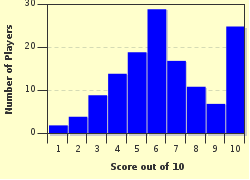Quiz Answer Key and Fun Facts
1. In which year were the first car registration plates issued in the UK?
2. The first number plate system included a single letter, or pair of letters, followed by a maximum of four numbers. What did the letters signify?
3. The first major change to British car registration numbers occurred in which year?
4. What was the suffix system?
5. In the 1960s, there were fewer 'E' registration cars than any others registered. What was the reason for this?
6. Why did car registrations switch to a prefix system in 1983?
7. From 1999, the year code changed every six months. What was the main reason for this?
8. The current car registration system was introduced in 2001. In which year will it end?
9. The regional identifier codes operated in the current system have some indirect associations. Although more obvious ones are 'L' for London or 'B' for Birmingham, where would a car displaying the letter 'F' have been registered new?
10. Which regional identifier code is reserved for the Isle of Wight?
Source: Author
Plumbus
This quiz was reviewed by FunTrivia editor
Bruyere before going online.
Any errors found in FunTrivia content are routinely corrected through our feedback system.

